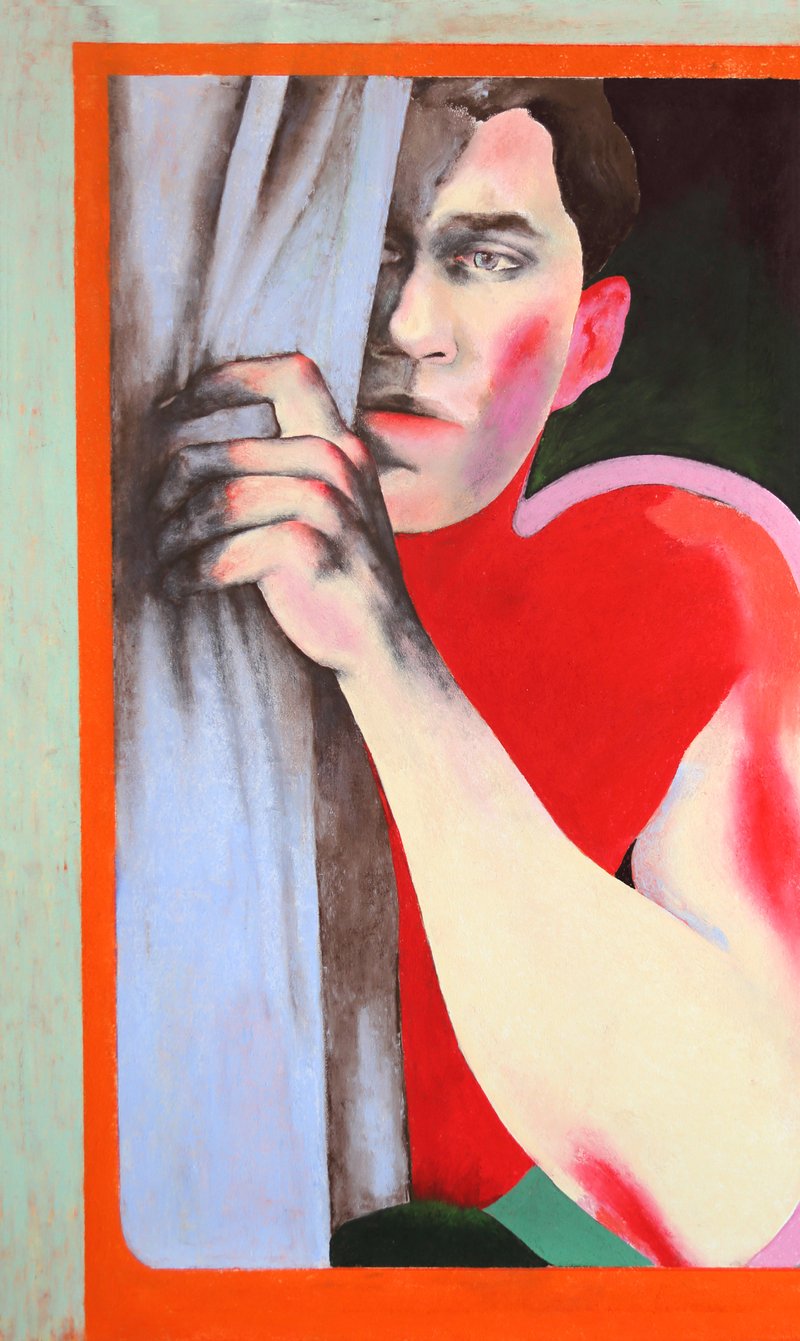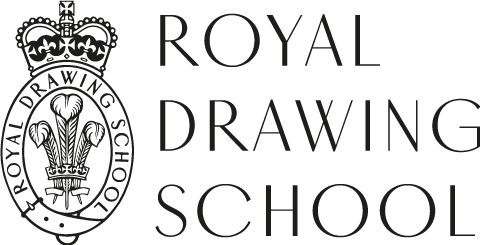International Artists at the Royal Drawing School: Pace Taylor
Pace Taylor, from Portland, Oregon, was awarded the Don Bachardy fellowship in 2023. They joined us at the Royal Drawing School for Summer Term. Here they tell us about their time with us in London…

The Don Bachardy Fellowship offers a gifted and dedicated postgraduate artist from outside of the United Kingdom the opportunity to join the Royal Drawing School for one term. The fellowship is named after the Californian portrait painter, Don Bachardy (b. 1934), who studied at the Slade in 1961, had his first show at the Redfern Gallery in Mayfair that year, and has gone on to draw and paint over 10,000 portraits from life.
Can you tell us a bit about your artistic practice?
I work with soft pastel and pencil on paper - large scale figurative drawings. As a non-binary person, my work has a lot of figures in it that I don't like to gender; people can come to them and meet them wherever they're at in their gender journey. The work is very, intimate, investigating how people connect with each other. Much of my life I felt like an observer or a witness of interactions between other people and not fully understanding how to interject myself in those situations. I use that experience in my work a lot - a witness to these experiences, to understand them better.

Why did you apply for the Don Bachardy Fellowship?
I've done a few residencies before and each one, regardless of the amount of time, I felt this profound shift in my work just because I'm able to take a step back from what I'm doing. I was looking for a challenge at the time, too. Being in Portland, Oregon, it's a pretty small place, even though it has an incredible arts community there, it's not an art hub like London is. Having the opportunity do pure observational drawing for hours every week was something I had never done before, that and being surrounded by other artists. To come to such a large city like this where museums are free was amazing. You have to pay a lot of money in the States to see the art that you would otherwise only be able to see online or in books. Also, having this kind of opportunity in Don Bachardy’s name, this American artist who spent so much time in London, was very interesting to me.

What was it like having a studio space in London?
Oh, I mean, incredible – and a shared studio space, even more so. At home I have a solo studio and sharing a studio space with all the artists on The Drawing Year really lent itself to the exchange of ideas that I was looking for. I have been doing full time art for five years now and a lot of it is such a solitary endeavour and I just wanted to engage with people and have that exchange of energy, which happened. Also being based in East London was amazing – there are a lot of really amazing small galleries in this area too.

How did you choose which courses to do?
I decided to take the City Gardens and Greenhouses course in particular because I'm primarily focused on the figure in my work and I wanted to see if I could push that and engage with the landscape in a similar way that I do with the human form. I really enjoyed experimenting and pushing myself to do that. Towards the end of the course, just working with pencil was really interesting because I was able to focus on light and shadow in a really similar way that I do when I'm especially exploring like the human face.
I also took the Materials of Drawing course and after coming back home, I started using watercolors in my work too. I have been making my own paints at home and starting to get a little bit into natural pigment forging as well. Having the opportunity to be in that class and interact with so many different materials and see the process of how they've become something that an artist can work with was an incredibly eye-opening experience. I think has made me a little bit less fearful of trying new things.

How was your time at the Royal Drawing School different to other residncies or educational experiences?
It was extremely different from my time studying digital arts because it was so hands-on. The university program that I went through was mostly graphic design and interactive media, so most of the time I was on the computer. So being in a classroom, being with other students who are also passionate about using their hands, made me want to push myself to get better at technical skills as well.
Seeing other people experimenting and using materials in such different ways, being so open and vulnerable, making mistakes in front of other people, it was a really special situation to be in. That is something that I haven't experienced a lot. I was really nervous being around so many other artists all the time but once you accept that, and accept that you might be a little embarrassed by what you're creating sometimes, I think that's when actual growth happens.

How did your practice develop over the course of the term?
I think the way that my practice developed over the term was, again, touching on being vulnerable, and allowing myself to experiment a little bit more with the work and not be so particular about it. When you're about five years into a full-time art practice, there are certain expectations on an artist, especially when they have any kind of commercial success. Having this residency time, being able to turn that voice off - I didn't have a gallerist telling me what I'm supposed to do, I didn't have collectors like asking for a certain thing – it made a huge difference. I was just able to be freer. So I think over the course of the term, I got more confident in trusting that. It was permission, I think.
What advice would you give to someone thinking of applying for the Don Bachardy Fellowship?
The first piece of advice I would give is to keep applying even if you don't get in, because I have applied multiple times and I got in last year. So, keep applying! Also just be open to however it pans out, show up to your classes because that's, I think, where some really exciting stuff in happens, when you put in the work. It's so rare that you get such focused time outside of an experience like this.
Is there anything else you’d like to share?
I would like to say that I do think that the Drawing School and the Christopher Isherwood Foundation were incredibly generous - I keep coming back to that – having a studio space, having access to the courses, the stipend was nice! London's really expensive and it made it so much easier for me to be able to accept the residency. I'm just super grateful for that.
Pace Taylor will be exhibiting works made on the Don Bachardy Fellowship at Nationale gallery in Portland, Oregon from 13th January 2024.
Follow @pace__taylor
Applications are now open for the Don Bachardy Fellowship 2024.
Application deadline is 5pm GMT Monday 11 December 2023. Apply here
The Don Bachardy Fellowship is sponsored by The Christopher Isherwood Foundation, www.IsherwoodFoundation.org.



